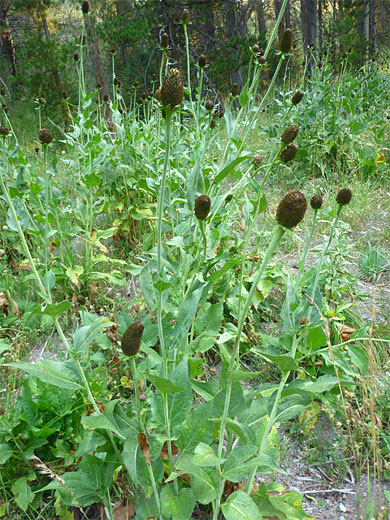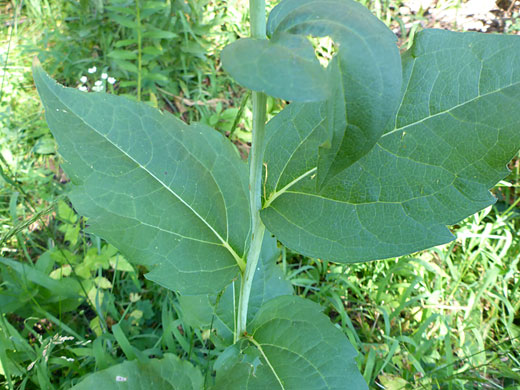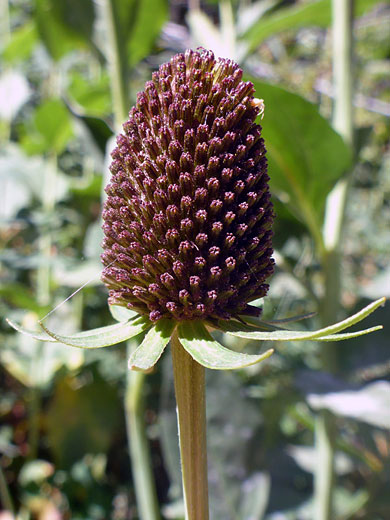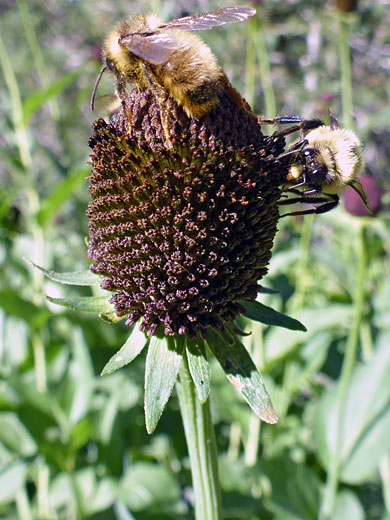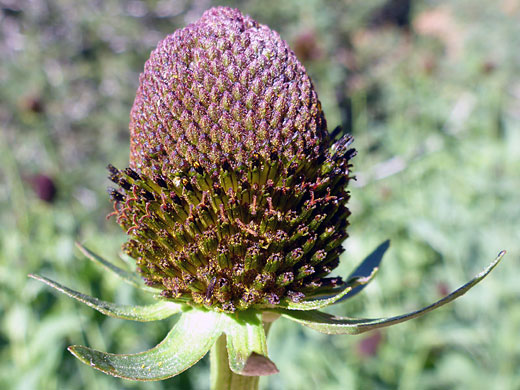Rudbeckia Occidentalis, Western Coneflower
Plants > Wildflowers > Asteraceae > Rudbeckia Occidentalis
Common names:
Western coneflower, rayless coneflower
Family:
Scientific name:
Rudbeckia occidentalis
Main flower color:
Range:
Washington to west Montana, south to north California, Utah and west Colorado
Height:
3 to 6 feet
Habitat:
Moist, open or lightly wooded sites in mountainous regions; 3,300 to 9,000 feet
Leaves:
Ovate, with pointed tips, lightly and irregularly toothed along the edges. Up to 12 inches long. Prominent central vein
Season:
June to August
The numerous (200 to over 500) tiny, five lobed disc florets of rudbeckia occidentalis are yellow when mature, but they soon wither and darken, and the overall color of the flowerhead is purplish-brown, the florets part of on a large cone about 2 inches long (lengthening with maturity), supported by a thick, rigid stalk that may reach a height of 6 feet. Only a small fraction of the florets are yellow at any one time; these move up the cone as the season progresses.
Below the flowerhead is a ring of spreading, triangular, leafy bracts, each over one inch long, while the true leaves, also large, are found at intervals all along the stem. Leaves and bracts are sparsely hairy underneath, and along the edges. The plant is particularly favored by bees, who gather significant amounts of nectar. Most other members of this genus have large yellow ray florets; the Western coneflower is one of the few species where these are absent.
Below the flowerhead is a ring of spreading, triangular, leafy bracts, each over one inch long, while the true leaves, also large, are found at intervals all along the stem. Leaves and bracts are sparsely hairy underneath, and along the edges. The plant is particularly favored by bees, who gather significant amounts of nectar. Most other members of this genus have large yellow ray florets; the Western coneflower is one of the few species where these are absent.
All Contents © Copyright The American Southwest | Comments and Questions | Contribute | Site Map


